NISM Newsletter - September 2020
Newsletter
Issue 2, September 2020
Editorial
by Vincent Liégeois
Dear NISM member, dear colleague,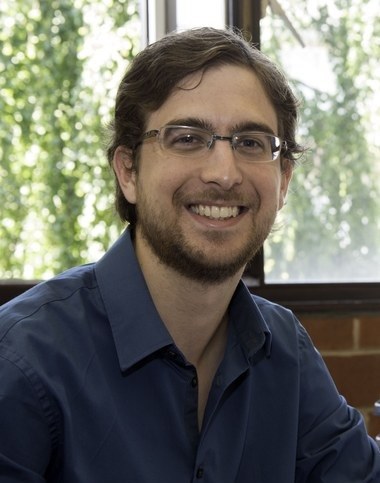
A new academic year is about to begin, full of challenges despite this period of crisis.
For our institute, this new year is also a new start. Francesca and I are taking over the reins of our institute after the nomination of Benoît and Laurent as head of the Chemistry and Physics departments, respectively. I would like to thank them, both personally and in the name of NISM, for their efforts in order to launch our institute. One of their last tasks has been the creation and the completion of the first NISM call for projects, which concluded by the selection of three scientific projects promoting three new collaborations between PIs of NISM. Let’s hope that this is only the beginning of many and fruitful new collaborations between our members. After all, this is the ultimate purpose of NISM as an institute: bringing together physicists and chemists to explore the world of structured matter.
This year, NISM will also face its first evaluation: it will be an opportunity to evaluate the first achievements of NISM, and to define our next challenges. So, what is our future? Francesca and I have new ideas to bring NISM forward and to promote new ways all NISM scientists can participate in the life of our institute. Our first mission will be the organization of the next NISM one-day meeting that, for the first time, will be held extra-muros. You can already save the date of November 20th 2020. We really hope that all of you will come to this important event, which will be - at least for most of us - the first meeting since many difficult months. For the rest, you will have to wait a bit more, but stay tuned for the following newsletters.
News
NISM call for projects 2020: three selected projects
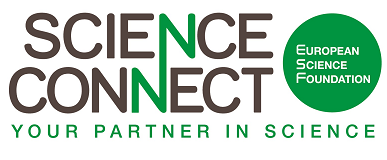 The ESF (European Science Foundation) review panel has taken decision concerning the submitted projects to the NISM call 2020. All the submitted projects were very well ranked. The selection has been made of the top three ranked projects.
The ESF (European Science Foundation) review panel has taken decision concerning the submitted projects to the NISM call 2020. All the submitted projects were very well ranked. The selection has been made of the top three ranked projects.
The first project is entitled “Parchments & inks: a combined approach of analytical methods for investigating parchment degradation and ink composition”. It was submitted by Olivier DEPARIS, Laurent HOUSSIAU and Nikolay TUMANOV.
The second project title is “Heterogeneous Frustrated Lewis Pairs for Catalytic Hydrogenation of CO2”. It was submitted by Guillaume BERIONNI and Carmela APRILE.
The third project is entitled “A general method to unveil the membrane protein refolding by vibrational SFG spectroscopy: a molecular insight”. It was submitted by Francesca CECCHET and Catherine MICHAUX.
The designated projects will have a grant of 60 000 euros each.
The NISM is grateful to all those who made this call for projects succeed.
Publications
Ming-Hui Sun: the art of Zeolite single crystals
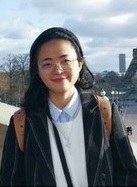 Dr. Ming-Hui Sun, a post-doctoral researcher at Professor Bao-Lian Su's Chemistry of Inorganic Materials (CMI) laboratory in NISM. Their project is a part of a collaboration agreement between UNamur and Wuhan University of Technology (China). Ming-Hui has published in two prestigious international journals. This research is partially funded by the project “Depollut Air” of Interreg V France-Wallonie-Vlaanderen.
Dr. Ming-Hui Sun, a post-doctoral researcher at Professor Bao-Lian Su's Chemistry of Inorganic Materials (CMI) laboratory in NISM. Their project is a part of a collaboration agreement between UNamur and Wuhan University of Technology (China). Ming-Hui has published in two prestigious international journals. This research is partially funded by the project “Depollut Air” of Interreg V France-Wallonie-Vlaanderen.
The two research works concern the synthesis of zeolite single crystals with a highly ordered and fully interconnected intracrystalline macro-meso-microporous hierarchy and their applications as catalysts in the reactions involving bulky molecules. Fabrication of such materials is a great challenge and has gained great interests for both scientists and industries.
Zeolites are microporous silicoaluminates and are one of the most important catalytic materials used today. However, the slow transport of the reactants and products within their intra-crystalline small microporous channels (often less than 1 nm) greatly hinders their catalytic efficiency. It is highly desirable to reduce the diffusion limitations within each zeolite crystal. The introduction of additional interconnected intra-crystalline hierarchical mesopores or/and macropores is an efficient strategy towards this. Besides, more precise control over the location and interconnectivity of the additional porosity could offer potential gains from the structural modification. However, hierarchically structuring tunable mesoporosity and macroporosity simultaneously with excellent interconnectivity, desired location and high ordering within each zeolite single crystal to maximize the benefits of the porous hierarchy in catalytic reactions still remains highly challenging.
Under the supervision of Professor Bao-Lian Su and with his collaborators from the CMI laboratory and Wuhan University of Technology, their team succeeded in introducing a fully interconnected and highly ordered intra-crystalline macro-meso-microporous hierarchy into zeolite Beta and ZSM-5 crystals.
This allows accelerated mass-transfer, reduced coke formation, increased catalytic activity, improved product selectivity and extended catalytic lifetime in catalytic reactions compared to conventional microporous zeolites. These new hierarchically meso-macroporous materials with single crystalline nature will open a large panel of applications not only in adsorption, catalysis and separation, but also in energy storage and conversion and create new research areas.
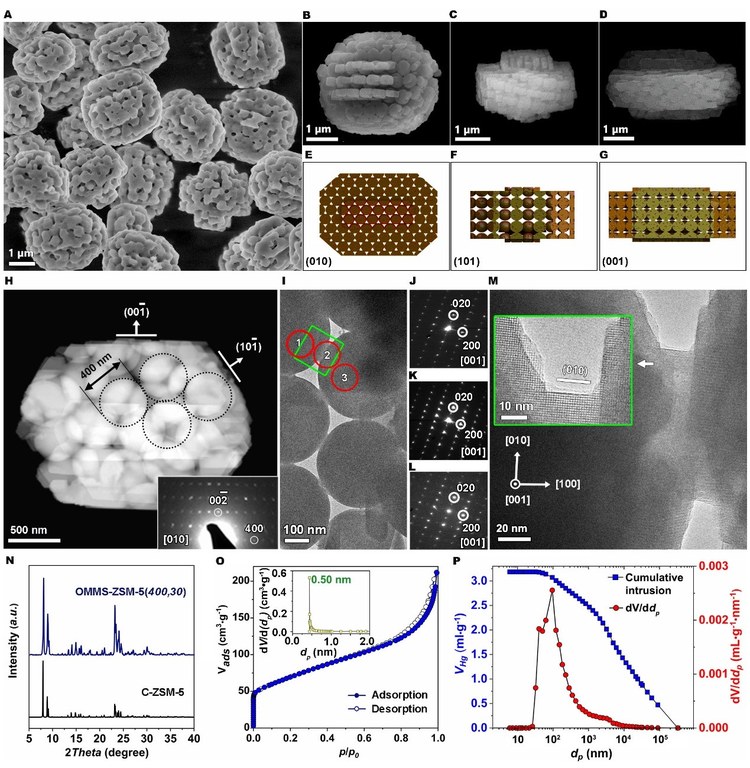
Figure 1. Structure of hierarchically ordered macro-meso-microporous zeolite single crystal ZSM-5 (OMMS-ZSM-5).
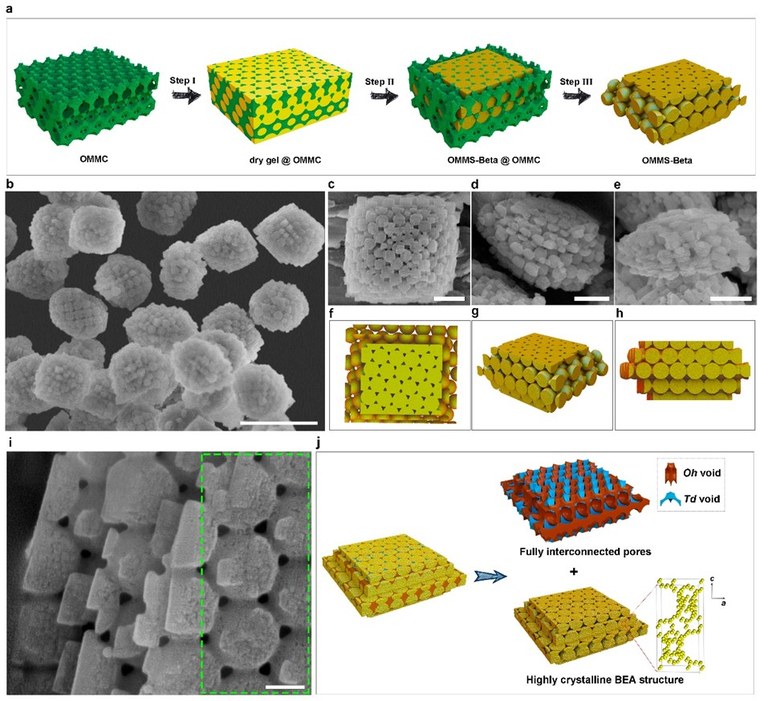
Figure 2. Synthesis and structure of hierarchically ordered macro-meso-microporous zeolite single crystal Beta (OMMS-Beta).
(1) Sun, M.‐H., Zhou, J., Hu, Z.-Y., Chen, L.‐H., Li, L.-Y., Wang, Y. D., Xie, Z. K., Turner, S., Van Tendeloo, G., Hasan, T. and Su, B.‐L. (2020), Hierarchical Zeolite Single-Crystal Reactor for Excellent Catalytic Efficiency. https://doi.org/10.1016/j.matt.2020.07.016 https://www.sciencedirect.com/science/article/pii/S259023852030374X
(2) Sun, M.‐H., Chen, L.‐H., Yu, S., Li, Y., Zhou, X.‐G., Hu, Z.‐Y., Sun, Y.‐H., Xu, Y. and Su, B.‐L. (2020), Micron‐Sized Zeolite Beta Single Crystals Featuring Intracrystal Interconnected Ordered Macro‐Meso‐Microporosity Displaying Superior Catalytic Performance. Angew. Chem. Int. Ed. doi:10.1002/anie.202007069 https://onlinelibrary.wiley.com/doi/10.1002/anie.202007069
Contact: Prof. Bao-Lian Su (bao-lian.su@unamur.be)
More information: http://www.gotos3.eu/fr/projecten/depollutair
UV scattering by bird eggs
A multidisciplinary team of researchers from NISM have recently unveiled the physical origin of UV scattering by eggshells.
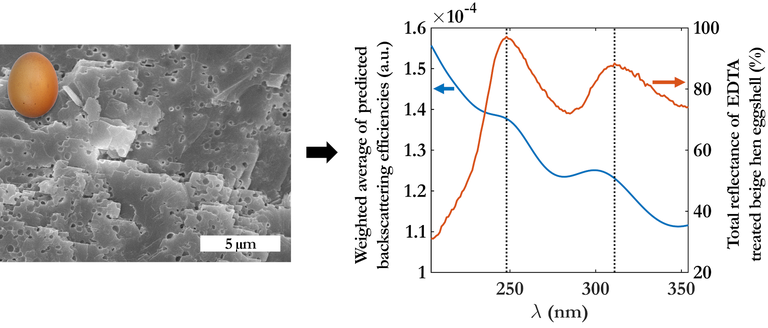
Eggshells are essential for the reproduction of birds since the optical properties of shells have an impact on biological functions such as heating and UV protection, recognition by parents or camouflage. Whereas ultraviolet reflection by some bird eggshells was described in the literature, its physical origin had remained poorly understood until now and a prestigious oral contribution by NISM members to the Faraday Discussions held online in July this year. The oral presentation came along the publication of a peer-reviewed research article in the related journal of the Royal Society of Chemistry.
"In this study, we identified a porous structure in eggshells of several breeds of hen, duck and quail using techniques such as electron microscopy and mercury intrusion porosimetry. This structure was found in the so-called "calcified shell" (i.e., within the shell, at a depth ranging from ca. 20 µm to ca. 240 µm). With optical modelling, we found that these pores were responsible for reflectance peaks measured in the near-UV range by spectrophotometry.", explained Dr Sébastien Mouchet who supervised the project.
This UV response was analysed in terms of the distinct visual sensation of hens and humans: eggshells appearing achromatic (i.e., white) for humans proved to be chromatic for hens. It is hence very likely that this UV signal could play a biological role for birds. The optical simulations of the UV response from the observed porous structure relied on Mie scattering theory. This theory is known for explaining the white visual appearance of clouds and showed that light backscattering from the pores is the origin of the UV response from the investigated eggshells. Due to the similarities between the pore size distributions observed for beige hen eggshells and other investigated poultry eggshells, the research team comprising members of Prof. Olivier Deparis and Prof. Bao-Lian Su's labs expect Mie backscattering to be the origin of the UV response from the eggshells of many other bird species.
Mathieu Ladouce, Tarek Barakat, Bao-Lian Su, Olivier Deparis, Sébastien R. Mouchet, “Scattering of ultraviolet light by avian eggshells”, Faraday Discussions, May 2020, doi: 10.1039/D0FD00034E. https://doi.org/10.1039/D0FD00034E
PhDs and post-docs in NISM
Presentation card: Tárcius Nascimento Ramos
 My name is Tárcius Nascimento Ramos. I am from Brazil.
My name is Tárcius Nascimento Ramos. I am from Brazil.
I received my master and Ph.D. degrees from the University of Sao Paulo.
During my academic life, I have been studying the linear and nonlinear optical effects of atoms and molecules in solution employing multiscale approaches.
Now, I hold a post-Doc position in NISM supervised by Prof. Benoît Champagne. We have been dedicating our attention to describe the nonlinear optical properties of molecular aggregates in bulk and interfaces.
Save the date: 3rd annual meeting of NISM
Every year, an entire day is dedicated for the meeting of all the NISM members. External professors are invited to inaugurate the sessions with passionate talks. PhDs and post-docs from NISM give short talks or expose posters about their works. The day gathers communication, science, and fun.
This year, the meeting will take place on Friday November 20th 2020 in the Wargnies & Jean-Paul II conference hall in Salzinnes – Namur.
More details about the program and the subscription will be published soon.
Subscribe to NISM newsletter here.
If you want to publish your works, events, seminars, conferences, publications, or other news in the NISM newsletter, send it please to executive-assistant.nism@unamur.be
Contact
Becher HAJ IRAHIM
Executive Assistant
executive-assistant.nism@unamur.be
www.nism.be


